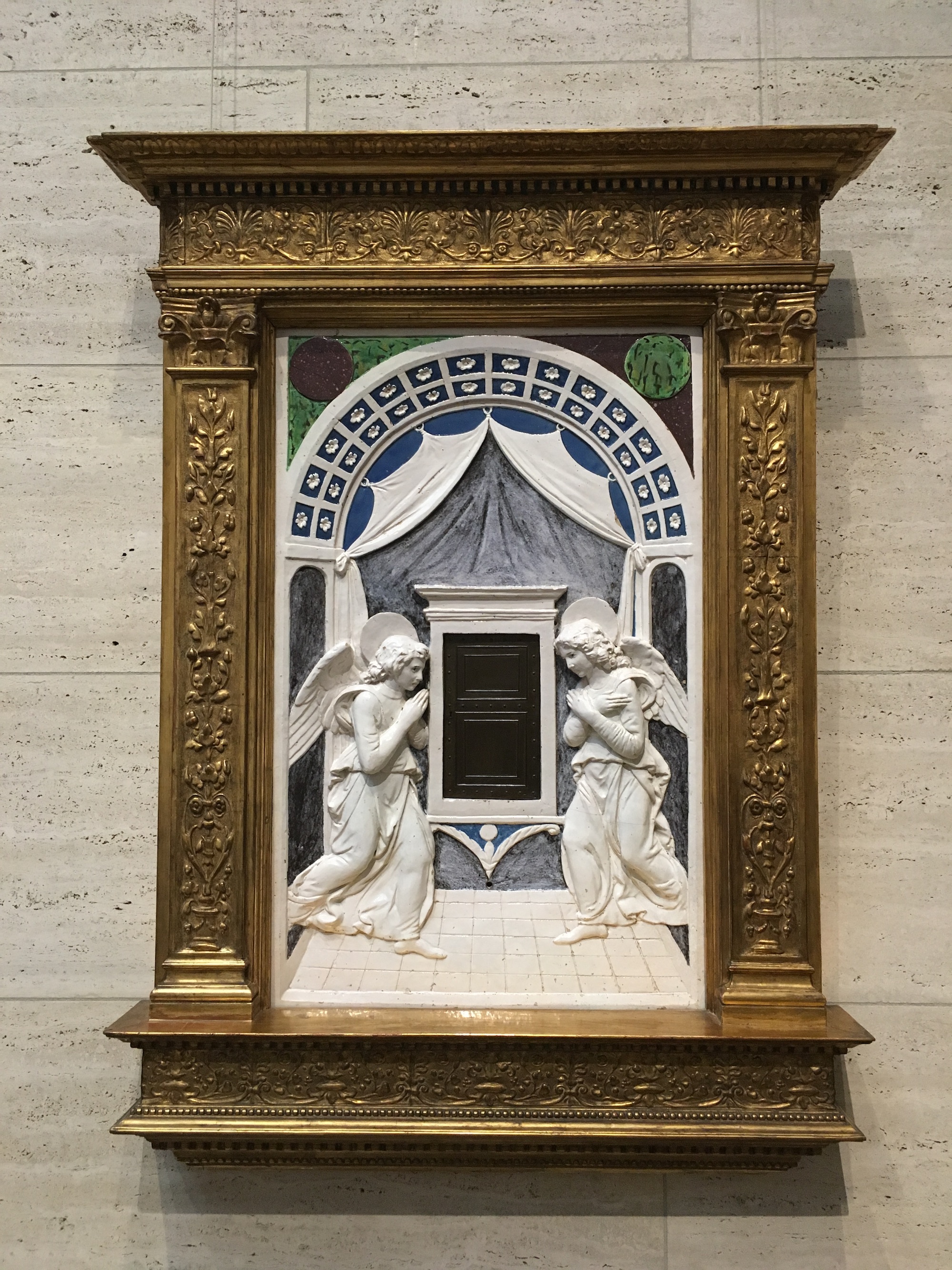This tabernacle once housed the Eucharist, the consecrated hosts that are the substantial presence of Jesus Christ in the Catholic faith. The corner panels of the tabernacle are designed to resemble red and green porphyry, the ancient stone which was from a single mine in Egypt and nearly impossible to cut. When the location of the mine and how to cut it were lost in the Middle Ages, it became a nearly invaluable material. By referencing this ancient stone here the artist underscores the important function of the tabernacle. The angels reflect the hallmark grace and naturalism of Andrea della Robbia’s work, and their heavy drapery is a facile articulation of a tradition originating in Ancient Greece. The tabernacle further evokes Old Testament iconography of the Ark of the Covenant which was flanked by two cherubim.
Andrea’s uncle Luca della Robbia developed a unique and unmatched process used here for glazing terracotta sculpture that distinguished him from other artists of the 15th-century. It involved firing the sculpture multiple times so that paint fused with the clay, ensuring a lasting color. With this technique, sculptures could be displayed outside and the colors would not fade. The glaze of the paint provided an effervescent shine that made the ceramics coveted adornments for Tuscan gardens and churches. As this arcane technique was known only to Andrea and the Della Robbia workshop, Della Robbia works habitually were left unsigned. Why sign a work that everyone knew was yours?
The Tabernacle is part of the “Della Robbia: Sculpting with Color in Renaissance Florence” exhibition and was on display at the National Gallery of Art in Washington, DC during the first half of this year.
- Patti Sanders


 Andrea della Robbia
Andrea della Robbia